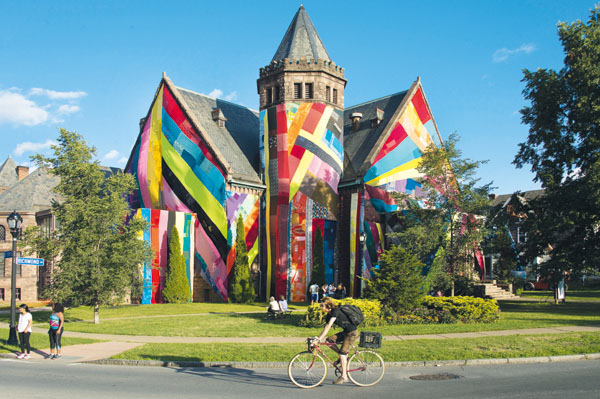
Fabric wrapped architecture and landscapes
First, there was Christo …
In the 60s and 70s, Christo and Jeanne-Claude had the world talking about their monumental, fabric-wrapped architecture and landscapes. Amanda Browder takes up the reins, using acres of cloth to ‘electrify’ the drabness of cities and towns. Her urban artworks are joyous celebrations of texture and colour. By Janai Velez
Christo began wrapping objects in the late 1950s, starting off with small, everyday items – cans and bottles, telephones and shoes. But once he and his wife, Jeanne-Claude, joined forces, the scale of the work skyrocketed.
Learn how to hand piece By Carol Roberts
Natural and man-made objects were adorned with fabric and rope – from valleys and waterways to ancient structures. A Roman wall, the oldest bridge in Paris, Missouri garden walkways and an Australian coastline were all wrapped in fabric.
Eleven Miami islands were surrounded by fabric – more than 600,000 square metres of floating pink material. And now, interactive artist Amanda Browder has put her own mark on buildings, with cascading rivers of fabric.
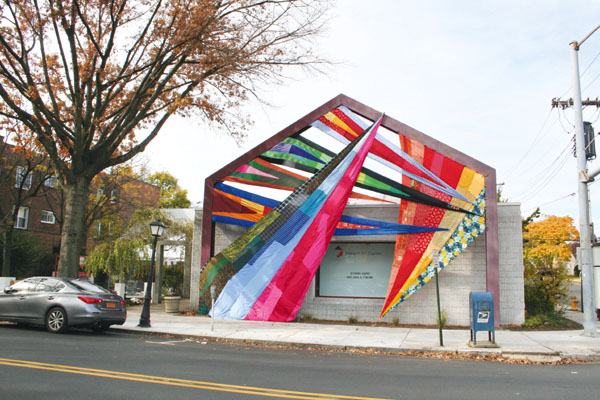
Amanda Browder’s temporary, large-scale fabric installations are visual feasts that are left in situ for anything from two days up to three weeks. She embellishes structures with colour and pattern, creating a hub for conversation and wonderment.
Bright colours and psychedelic designs contrast with the typically dull tones of any given neighbourhood she chooses to adorn. As Amanda Browder says, the short-term nature of her installations only adds to their beauty. “they are special, awe-inspiring moments that, if left up for too long, lose their surprising element.”
Community involvement is encouraged right from the start. The fabric used in each installation is site-specific, as it’s donated to her from people living in the area.
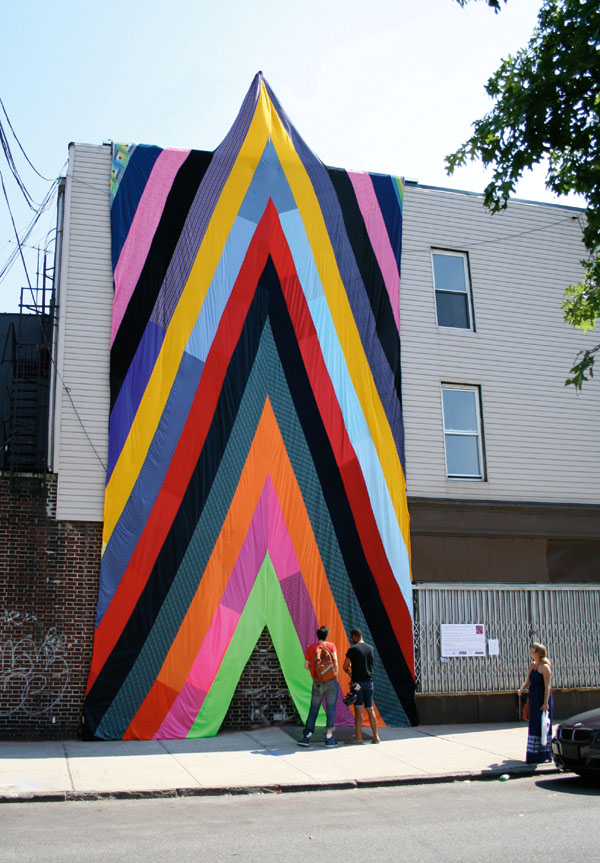
Public sewing days are held, to pin and sew a patchwork of monochromatic fabric shapes for the larger design, while at the same time teaching new skills to community members.
“My goal is to empower the viewer to feel like the artist and to feel pride in the finished piece,” says Amanda Browder. “From material collection to construction and exhibition, I hope to encourage community volunteers to participate in ways that require collaboration and conversation; conversation about city, community, architecture and art.”
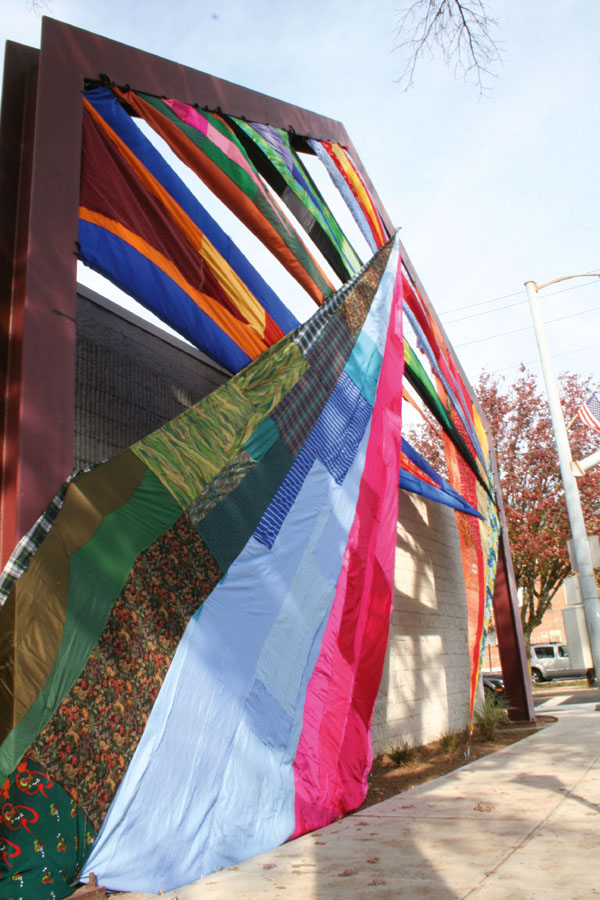
Amanda works with structural engineers to ensure the installations can stay up for the required period of time, although this is subject to weather. “Many times it takes different, unique methods to hold the fabric to the building without it floating away.
We ballast the piece with wire, weights and other engineered systems to make sure the piece will stay up for the duration of the exhibition,” Amanda Browder says. “Memories of the project are ‘up’ for a longer period of time.
Learn curved piecing By Margaret McDonald
People talk to their friends about what it is, or if they participated, or what section they worked on. It’s an ice-breaker for people on the street to get to know each other.”
To date, the tallest building she has beautified with fabric was at the Abroms-Engel Institute for the Visual Arts, at the University of Alabama, Birmingham, USA. “The piece we made was over 30.5 metres long.
We used the inside hallway to stretch out the fabrics so 30 volunteers could help sew the larger pieces together.” The grand size of the installations, together with the intensity of colour, incites breathtaking reactions.
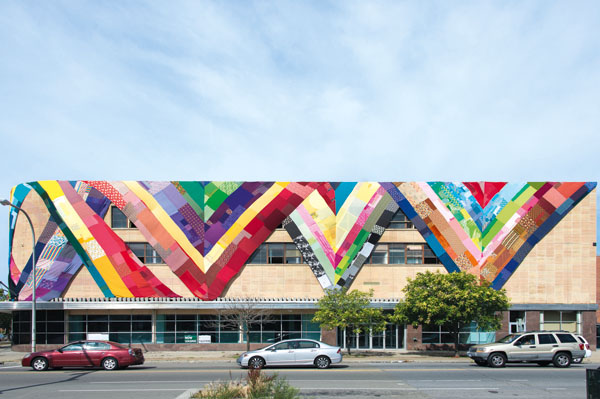
According to Amanda Browder, the community participation is one of the best parts of her work. For her most recent project, Spectral Locus (2016), in Buffalo, New York, three historic buildings (a two-storey office building, a church and museum office building) were decorated with fabric.
“From all over, volunteers would come and share their stories of living in Buffalo or how they started sewing or how they felt connected with the project through a personal story.
Sometimes, people would drop off fabrics and take the opportunity to relate the story of how their family member had used this for curtains or a dress. Sometimes, people would write to me to say that the project had unleashed a new creativity in their world”.
After a work is taken down, Amanda Browder encourages viewers to return to the location to see how different the building looks from pre-installation.
“Sometimes, it makes you really see how tall a building is, or you notice new elements of the building that you didn’t see before. These projects seem to infuse the buildings with energy and nostalgia.”
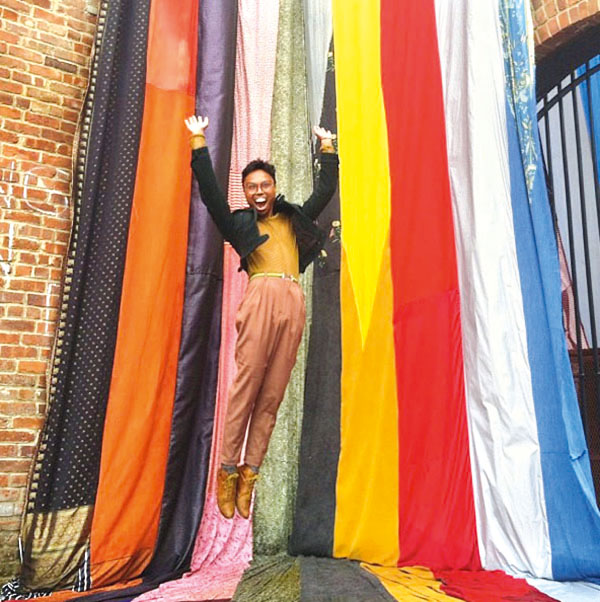
Amanda’s temporary, large-scale fabric installations are visual feasts that are left in situ for anything from two days up to three weeks.
“Many times it takes different, unique methods to hold the fabric to the building without it floating away.”
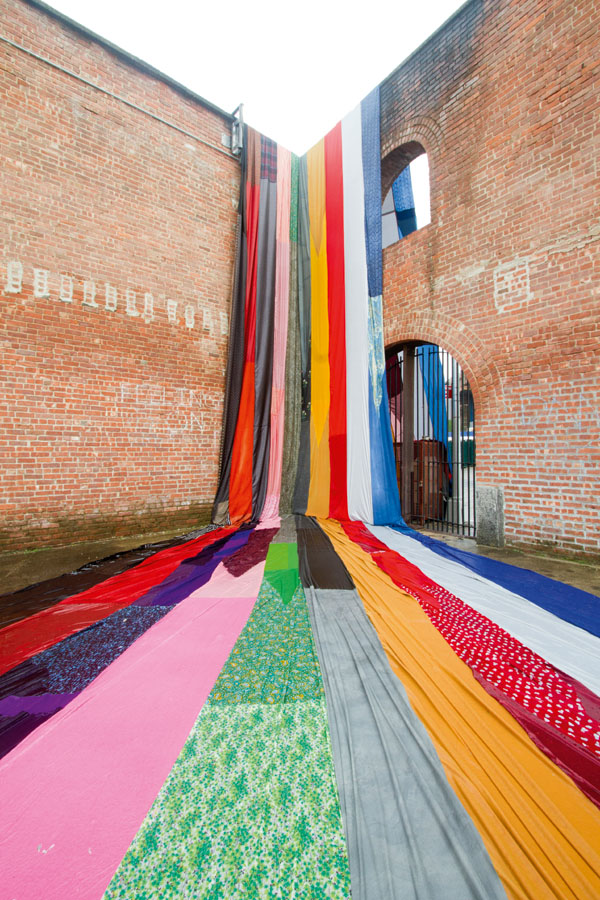
Greatest Challenges
‘Large scale’, ‘community involvement’ and ‘outdoors’ bring on opportunities for some lateral thinking and problem-solving. Here are the top three challenges Amanda Browder encounters with her projects.
- Getting the word out for people to come and participate. Many of our societies around the world see creativity as either a threat or as something extra-curricular. I find it so important, in all forms of study, that creative thought can lead to new innovations and new directions in health, peacekeeping, science, equality… the bigger pictures in life. It doesn’t come from sitting and waiting for things to change.
- Another challenge for me is to get people in the room and to feel comfortable. We all have issues of doubt and failure. My goal as an interactive artist is to help people tap into that creative side and break free of their self-doubt and to trust their own creative mind.
- One of the more mundane issues is weather. Many of the donated fabrics are not made for long-term outdoor use. This makes them sensitive to wind and rain. Most of these pieces are engineered as if they are sails put on the outside of buildings. I work with structural engineers to make sure the pieces can be installed for one to three weeks.
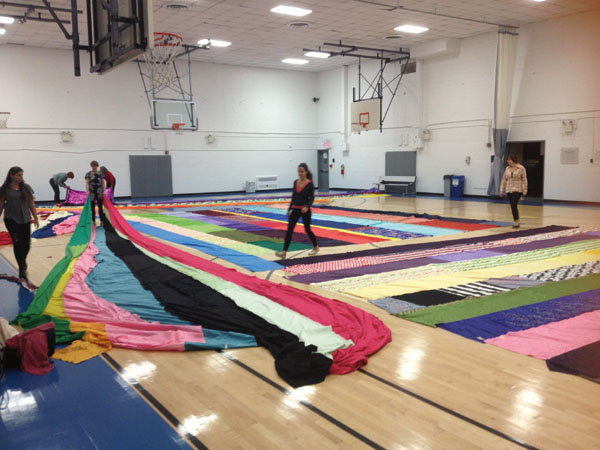
Community Spirit
There are many ways volunteers can get involved in these large-scale projects:
- Donating fabric
- Spreading the word
- Sewing, pinning and trimming fabrics
- Installing
- Celebrating the memory of the project once it comes down
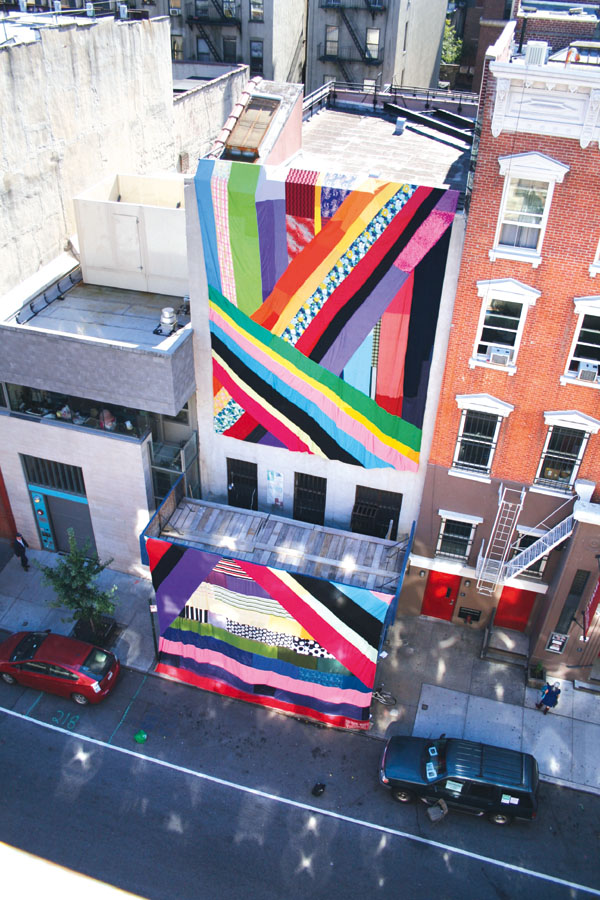
Happy Moments
It’s so fantastic when the final piece is finished and we get to look back from afar and see how it compares to the original design. This is one of the most overwhelming, empowering and happy moments for me. I feel that the piece exudes love, strength and a full representation of collective work.
Working with 2 ½in strips By Katrina Hadjimichael
To find out more about Amanda Browder, visit www.amandabrowder.com. Or you can email her directly, amandabrowder@gmail.com.


